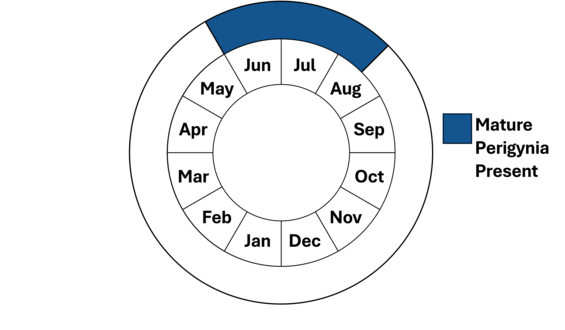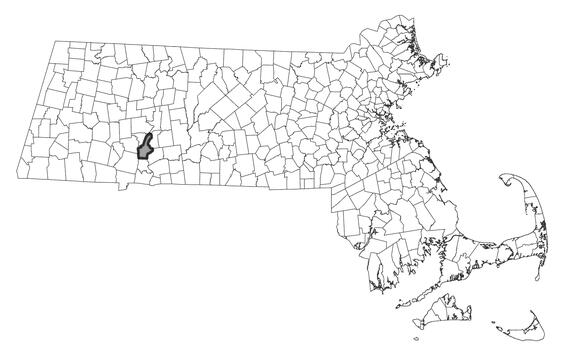- Scientific name: Carex mesochorea
- Species of Greatest Conservation Need (MA State Wildlife Action Plan)
- Endangered (MA Endangered Species Act)
Description
Midland sedge is a perennial member of the sedge family (Cyperaceae) found in dry, open areas. Flowering stems that emerge from tussocks of long, narrow leaves 2.5-4 mm (0.1-0.16 in) wide and 15-100 cm (6-39 in) tall, with compact inflorescences. To identify midland sedge and other members of the genus Carex, a technical manual should be consulted. Species in this genus have tiny, wind-pollinated flowers that are borne in spikes. Midland sedge is a member of Carex section Phaestoglochin, which is comprised primarily of upland forest species. Species in section Phaestoglochin have short, sessile spikes, each subtended by a bristle-like or scale-like bract. The spikes are all similar, each with several (3–15) perigynia and a staminate tip that may appear as an inconspicuous cluster of empty scales when the plant is in fruit. The perigynia are convex on the outer surface and flat on the inner surface, with a two-toothed beak; the achenes are lenticular. In midland sedge, the densely clustered spikes at the top of the stem may not be distinct; the whole inflorescence is one to one and a half times as long as wide.
Several other members of Carex section Phaestoglochin have densely clustered spikes. Bur sedge (C. sparganioides) has wider leaves (5–10 mm; 0.2-0.4 in) with loosely clasping leaf sheaths, and often occurs in mesic, shaded habitats. Oval-headed sedge (C. cephalophora) has short pistillate scales, up to half the length of the perigynia, whereas those of midland sedge are longer than the perigynia. In Muhlenberg’s sedge (C. muehlenbergii), the inflorescence is usually more than one and a half times as long as wide and the scales are slightly shorter than the perigynia. Muhlenberg’s sedge also has more yellowish perigynia and larger achenes than midland sedge. The introduced European star sedge (C. spicata) has larger perigynia (4–5.5 mm; 0.16-0.22 in) and longer ligules (appendages that project upward from the top of the leaf sheaf) than midland sedge, and usually has purplish-tinged basal sheaths.

Population status
Midland sedge is listed under the Massachusetts Endangered Species Act as Endangered. All listed species are protected from killing, collecting, possessing, or sale, and from activities that would destroy habitat and thus directly or indirectly cause mortality or disrupt critical behaviors. Midland sedge is known in Massachusetts from a single site on the border of Hampden and Hampshire Counties. This species is near the northeastern limit of its range in Massachusetts.
Distribution and abundance
Midland sedge occurs from Quebec to Georgia, west to Nebraska and Texas. It is naturalized in California. It is listed as Endangered in Massachusetts and New York, and Threatened in Ohio.

Distribution in Massachusetts
1999-2024
Based on records in the Natural Heritage Database
Habitat
The single known population of midland sedge in Massachusetts is a regularly mowed field on a sandplain. The field includes a mixture of European weeds and native sandplain grassland vegetation.
Healthy habitats are vital for supporting native wildlife and plants. Explore habitats and learn about conservation and restoration in Massachusetts.
Conservation
Midland sedge occurs in early successional habitats, and populations may decline as a result of increased canopy cover associated with forest succession. Periodic mowing or burning may be needed to maintain appropriate habitat for this species. All active management of rare plant populations (including invasive species removal) is subject to review under the Massachusetts Endangered Species Act and should be planned in close consultation with MassWildlife’s Natural Heritage & Endangered Species Program.
Contact
| Date published: | April 9, 2025 |
|---|